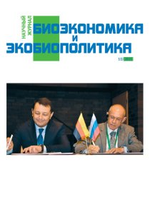Bio-Ispired Tools Based on Self-Assembled Hybrid Nanostructures in Bionanotechnology
Автор: Fahmi A.W.
Рубрика: Тезисы
Опубликовано в Биоэкономика и экобиополитика №1 (1) декабрь 2015 г.
Дата публикации: 15.01.2016
Статья просмотрена: 8 раз
Библиографическое описание:
Fahmi, A. W. Bio-Ispired Tools Based on Self-Assembled Hybrid Nanostructures in Bionanotechnology / A. W. Fahmi. — Текст : непосредственный // Биоэкономика и экобиополитика. — 2015. — № 1 (1). — URL: https://moluch.ru/th/7/archive/20/640/ (дата обращения: 25.04.2025).
The development of nanotechnological tools based on bio-inspired nanostructured materials for the delivery of anti-infective, anti-cancer and diagnostic agents is a pivotal goal to solve challenges in several areas of biotechnology. The available technologies to design and fabricate nanostructures with controlled composition and architectures are often not green and expensive nor scalable and usually limited in dimension and require multiple step processes. The presentation will demonstrate a simple and bio-inspired nanofabrication approach based on directed self-assembly of organic-inorganic hybrid materials as green, costeffective and powerful tool for manufacturing well-defined architectures. These are designed with nanometres precision to control bio-interfaces interactions at different dimensions and length scales. The key concept is to use self-assembled soft-matter systems (block copolymer, biopolymer, Dendrimers) linked with in-situ inorganic components (Au, Ag, Fe3O4 ...) to generate bulk quantity of quality multifunctional nanostructured hybrid materials. These are controlled by composition, shape and size imposed during the fabrication process to obtain hybrid nanostructures for wide range of biotechnology applications. The main advantage of the insitu preparation is that the size and size distribution of the inorganic components are well controlled inside the soft-matter systems. These will facilitate novel collective properties and provide active building blocks for constructing novel multifunctional materials with cost-effectiveness and superior quality in broad spectrum of vital applications in biotechnology, nanomedicine and public health.







